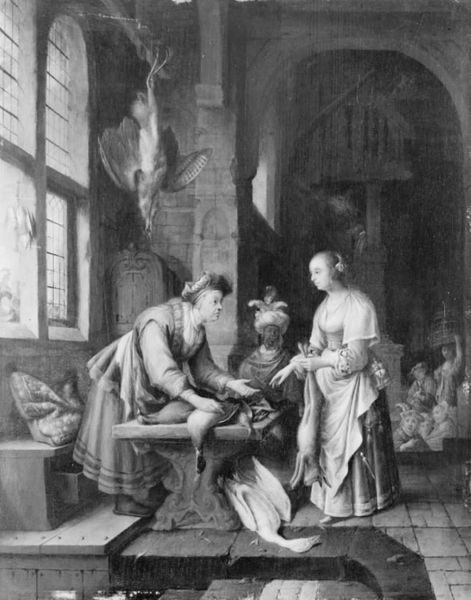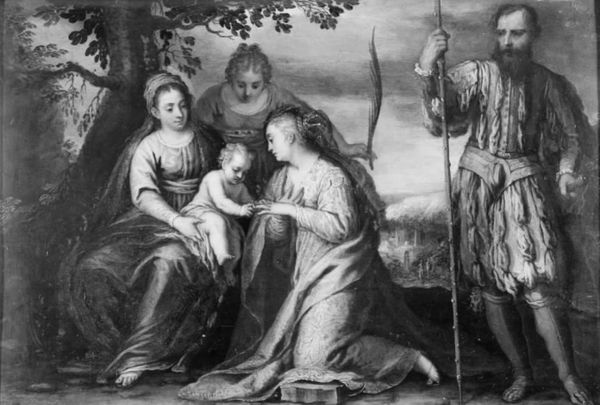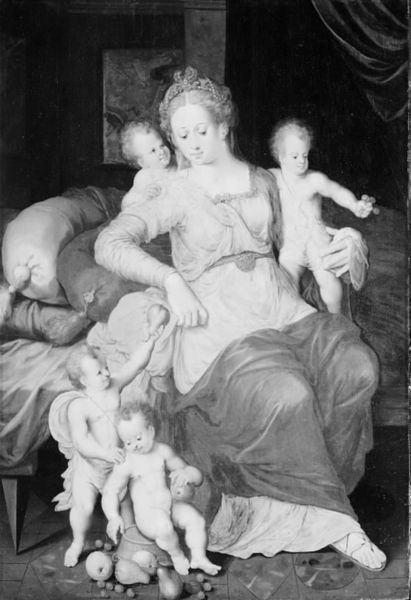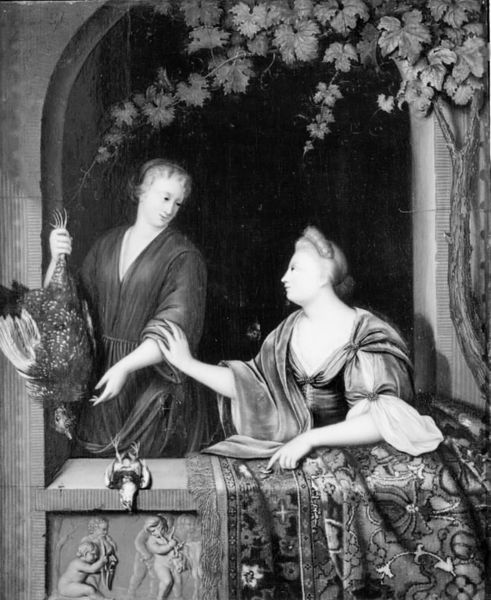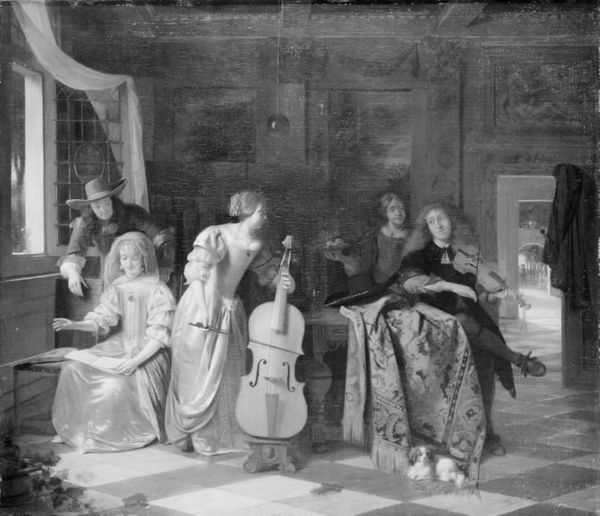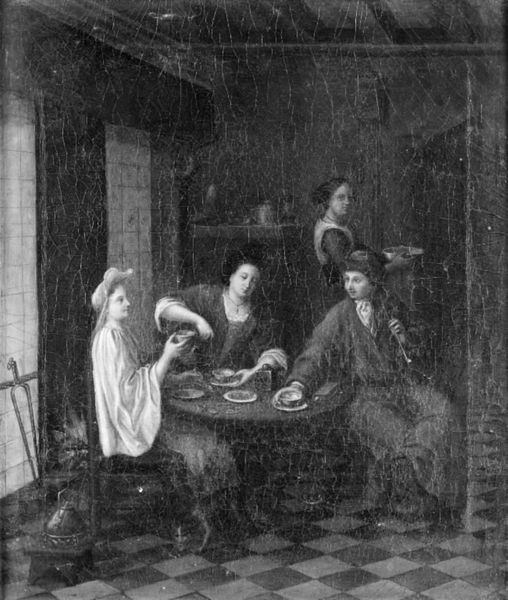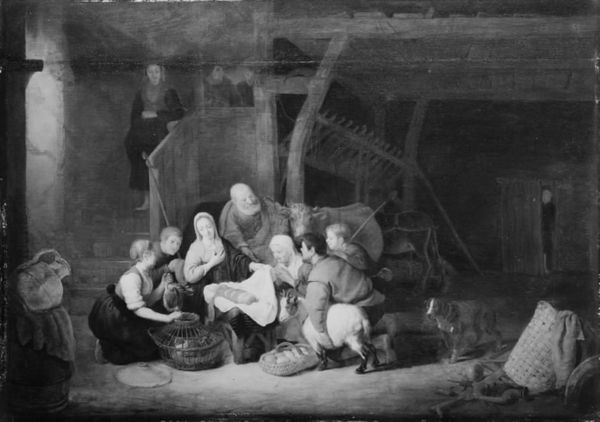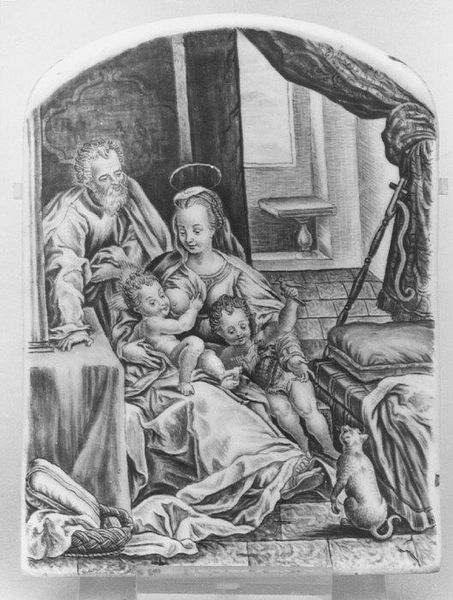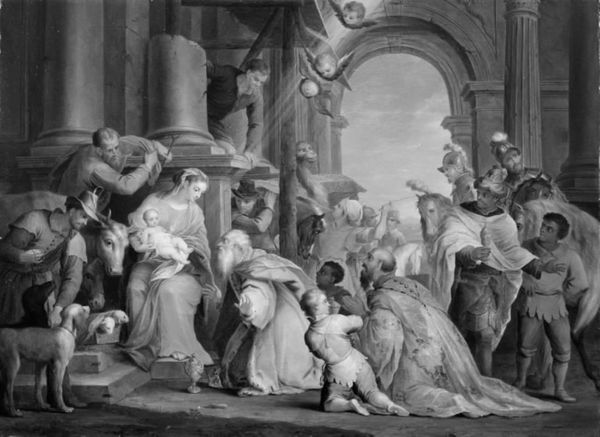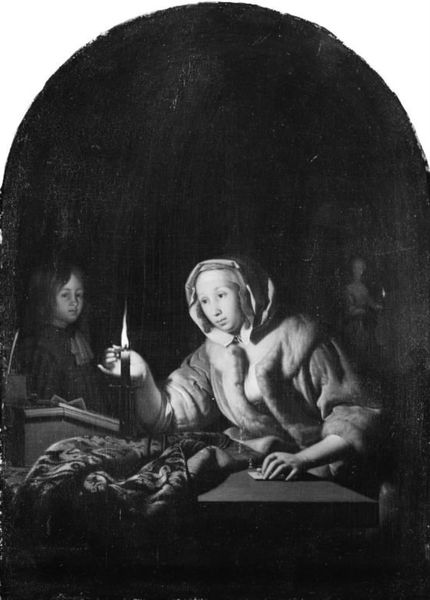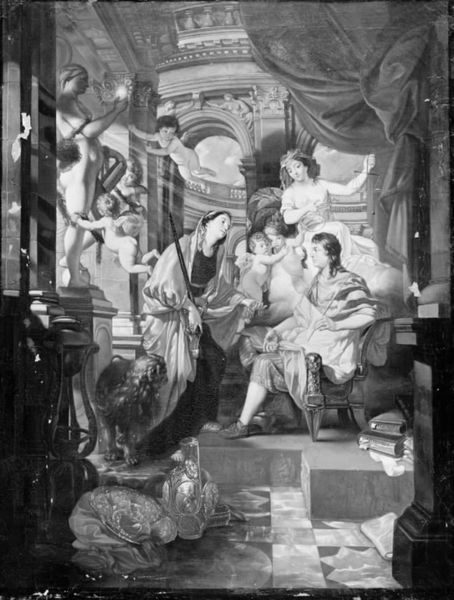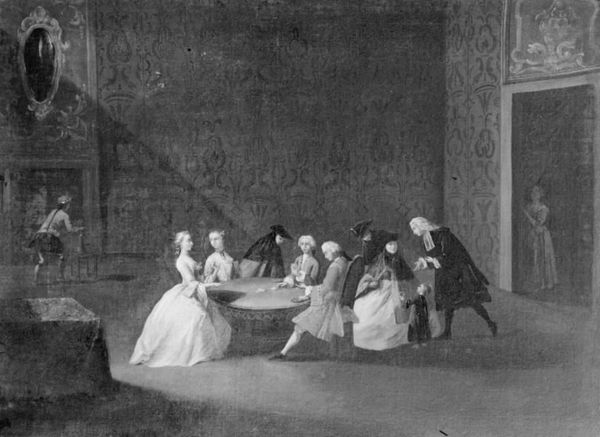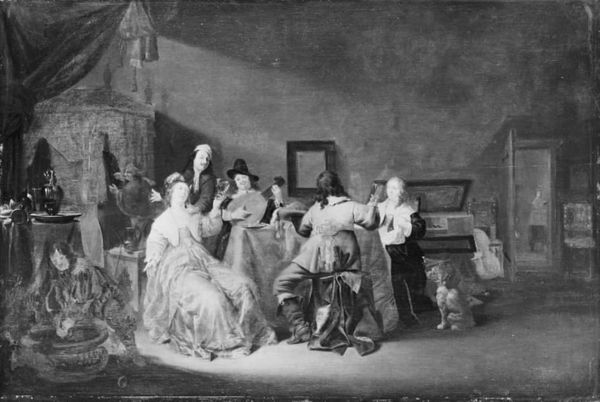
painting, oil-paint, wood
#
dutch-golden-age
#
painting
#
oil-paint
#
sculpture
#
black and white
#
wood
#
genre-painting
#
monochrome
#
monochrome
Dimensions: 54 cm (height) x 41.5 cm (width) (Netto)
Curator: This painting, titled "Domestic Scene," was created by Jan Adriaensz van Staveren sometime between 1640 and 1668, during the Dutch Golden Age. It's oil paint on wood panel, currently held here at the SMK. What's your immediate take on it? Editor: Well, its monochrome palette creates an intimate atmosphere. I'm struck by the contrasting symbols within this domestic space. The dead bird hanging versus the live bird cage, and that enormous cabbage. Is this some sort of memento mori of domesticity? Curator: It’s fascinating how van Staveren uses everyday objects – cabbages, root vegetables, birdcages – to ground us in the reality of 17th-century life. We can almost feel the weight of the textiles, the roughness of the wood, and envision the labour involved. Do these common objects become symbolic through their materiality? Editor: Certainly, I see the dead bird, perhaps a duck, as more than just supper. Bird imagery often suggests the soul or freedom – its death representing the constraints of domesticity. Note also the sleeping or resting gesture of the seated women, possibly dozing on the job, juxtaposed against the more active schoolboy, ready with his book. Curator: I am wondering what the intended viewer makes of that boy. Consider his fine clothes and his proximity to the women. How do these contrasting fabrics signal privilege? We have coarse fabric to finer fabrics denoting very different strata. Editor: Yes, material distinctions do reinforce that interpretation. And there’s the light itself – almost entirely devoted to the right half of the scene. See how it bathes the table overflowing with produce, while casting the women into shadow – creating an almost symbolic division between nurture and instruction, sustenance and privilege. Curator: Perhaps, but one must also think about the actual production of paint and pigments, and the wood substrate here. Dutch genre paintings from the time also offered aspiring merchant families moral guidance but, like most goods, such art required expenditure. The artwork as commodity becomes key to deciphering domestic relationships, wouldn't you say? Editor: Undeniably, this "Domestic Scene" presents a deceptively layered look at 17th-century Dutch society. The objects are indeed full of possible cultural insight. Curator: By investigating materials and social standing we reveal new angles of interpretation.
Comments
No comments
Be the first to comment and join the conversation on the ultimate creative platform.
